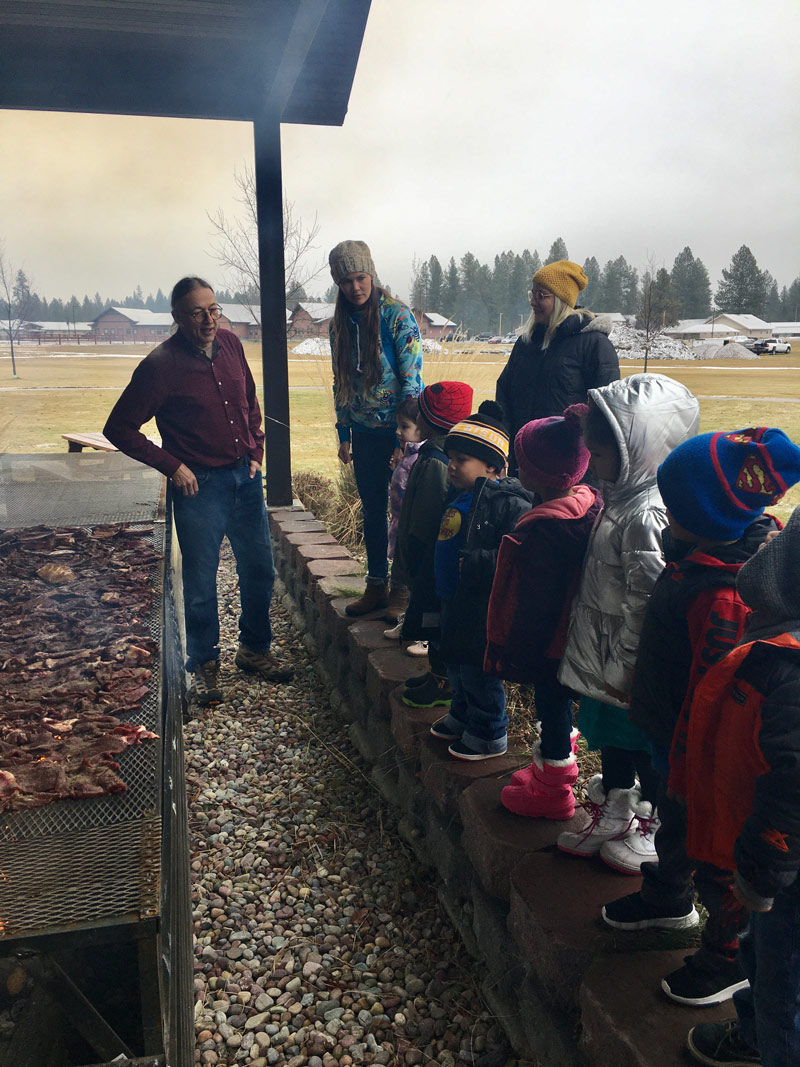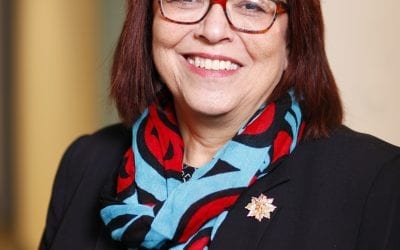By Dr. Amy Burland, SKC Division of Education Dean
and Dr. Michael Munson, SKC Faculty and Salish Language Educators Development (SLED) Program Director
A buzz of excitement masked the chilly fall air as yayas, big sisters, mothers, fathers, brothers, and partners shared intergenerational teachings with young children, families, fellow students, and administrators. Everyone came together at the Salish Kootenai College Education courtyard for a Dry Meat Social to celebrate the hunting season for the Séliš, Ql̓ispé, Ksanka, and neighboring tribal people.

Children learning how meat is thinly sliced in preparation for drying.
Members of the tribal community were brought together to construct dry meat racks and gather wood in the weeks before the event. The day before the feed, community members shot and dressed the deer. While a feast of Indian tacos was being prepared the day of the Dry Meat Social, college education faculty, staff, and students shared teachings learned previously from an elder and cultural knowledge-keeper. Preschool children and community members learned how to cut the meat into thin slices, while others kept the fire going and tended to the dry meat racks that were filled with thinly cut deer meat. The curling smoke rising from the racks sent a mouth-watering aroma throughout the building and campus while summoning more visitors to the gathering.
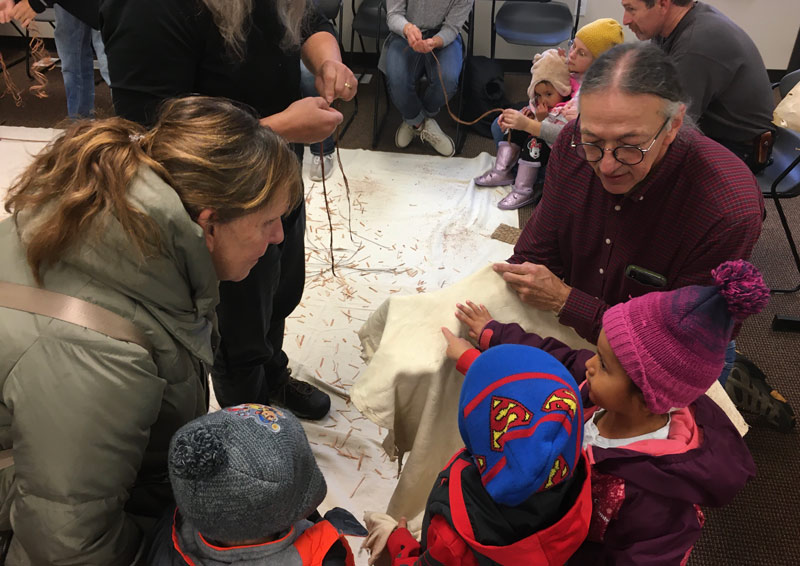
Engaging with deer hide
Besides the meat cutting and dry meat sensory stations, additional experiential stations were set up and facilitated by an Integrated Perspectives in Science for Educators (IPSE) instructor and students. Tim Ryan, the IPSE instructor, organized and led a station for learning about processing and using hides to allow visitors to compare the fresh deer hide to rawhide and tanned hides. The tanned hide had claw marks from a mountain lion, which spurred many preschoolers to share stories about what they imagined the deer had experienced. One preschooler announced loudly how he had never seen anything like the fresh hide “in all of his life!”
A cordage station allowed guests of all ages an opportunity to process cord from dogbane plants. Another station provided cattails for weaving mats with antibacterial properties. To deepen conceptual understanding as they returned to the SKC Early Learning Center, the preschool teachers stopped at the campus pond where cattails grow wild. Preschool children were delighted as they connected the wild cattails with the mats they had practiced weaving.
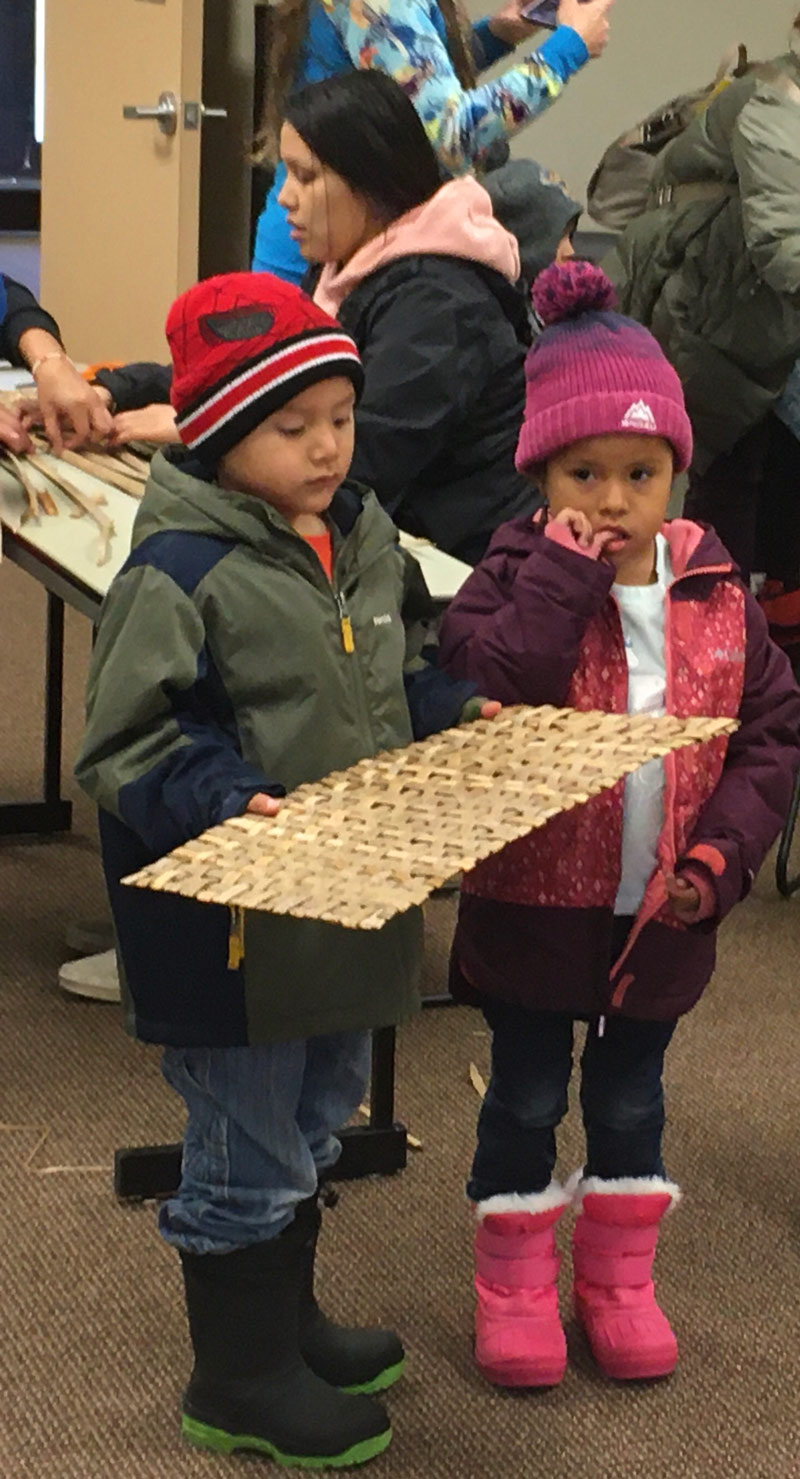
Child holds a woven cattail mat
Our ancestors utilized many of the resources found within our aboriginal homelands to craft a range of tools from the area’s materials that thrive within our landscape. They kept close tabs on their environment — for example, utilizing larch trees and wild roses as bioindicators for harvesting bull trout and knowing when bison were calving. With this knowledge, the IPSE team reimagined the original science content strand within our educator preparation program. We asked ourselves: Why not honor the knowledge our people have held as stewards of the land since time immemorial? Why not honor and perpetuate the seasonally based cultural and scientific knowledge our ancestors used to thrive within our landscape for millennia? Why not center our courses on these seasonal practices when we are certain the children of our communities will become more engaged with STEM?
As a result, IPSE has been collaboratively designed with guidance from the Séliš-Ql̓ispé and Kootenai culture committees, as well as other cultural, STEM, and educational knowledge keepers from within our communities. In each seasonal sequence, students are not only required to listen, observe, and practice the traditional knowledge and skills passed on intergenerationally, but they also become responsible for contributing a deeper understanding of the dominant STEM concepts tied to each set of teachings. Biology, ecology, geology and atmospheric sciences, ethnobotany, climate science, astronomy, physics, and chemistry are all covered seamlessly as instructors and students follow a large-scale scientific process beginning with an experiential learning opportunity such as our Dry Meat Social.
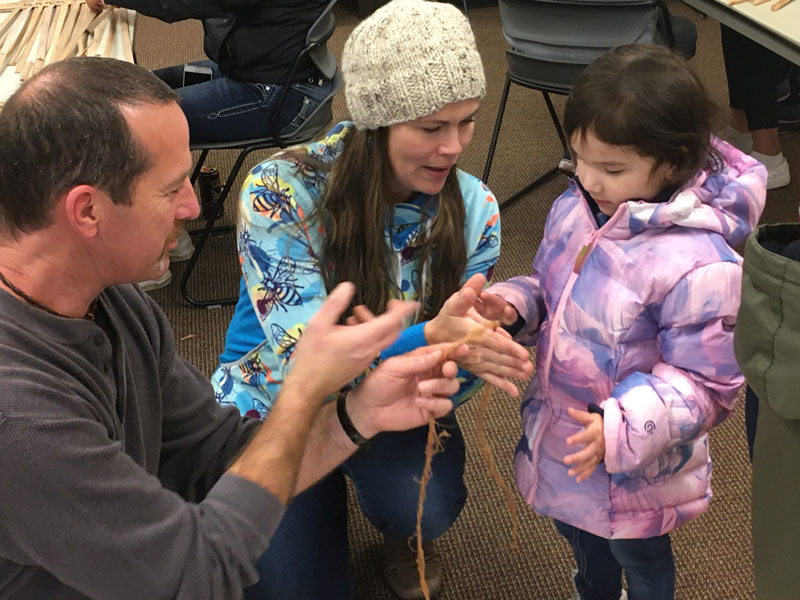
Learning to process cord from dogbane plants
Our students are passionate about learning from cultural knowledge-keepers while also contributing what they are learning in their IPSE courses to our communities. One IPSE student, Lene, gave this statement to our local newspaper, the Char-Koosta News, that summed up the day’s activities nicely:
“It is very rewarding because it makes me feel good and positive about who I am and what I am doing. I can take the lessons I learn and pass that on to the kids in the SLED (Salish Language Education Development) program. Then they will pass that on, and those kids will pass it on. We are links in the chain that binds us to the values of our language and our culture. It’s important for us as tribal people to have tribal elements in our classes; it reinforces our identity and instills pride. It’s important for non-tribal people, too, because the more we know about ourselves and the more non-tribal people know about us the better we understand each other. Understanding of each other is really important—it erases ignorance.” (Azure, November 21, 2019)
Salish Kootenai College Education Division is grateful to the American Indian College Fund for the financial support provided for the IPSE course development, experiential learning activities, and extensions provided for the cultural family events such as the Dry Meat Social. Two more events are planned for the winter and spring seasons. There will be a Coyote Stories gathering in February and a Moccasin-Making Workshop in March to prepare for the spring pow wows.

